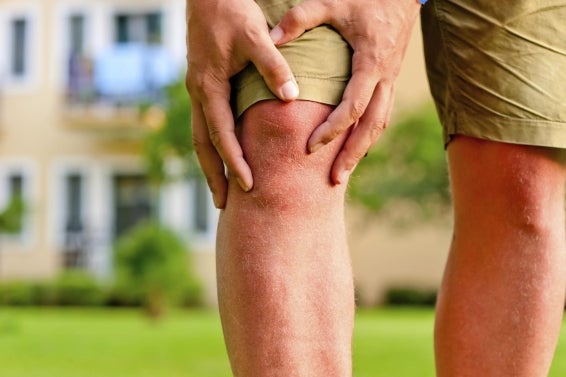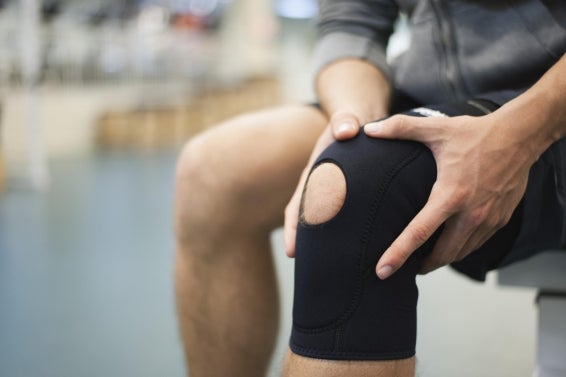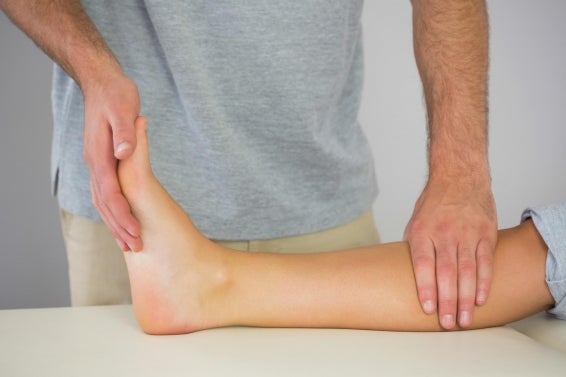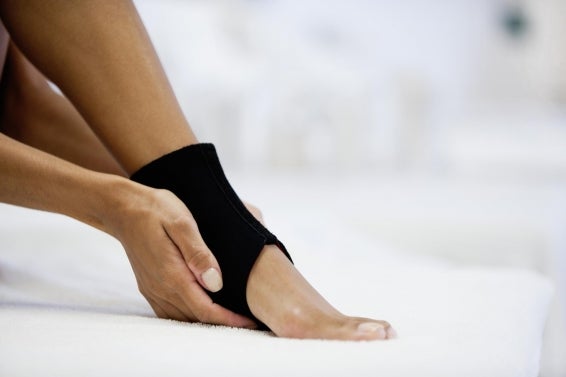View Providers
It’s common to experience aches and pains in your bones and joints. Wondering what’s causing yours? Skeletal pain can have many different causes and some should be evaluated by a doctor.
Below are a few examples of common sources of pain.
Shoulder
Your shoulder is a prime target for painful injuries. That’s because the ball of the joint is larger than the socket that holds it. As a result, it can easily dislocate. Repetitive motion, injury, or just plain wear and tear can also strain and weaken the shoulder’s rotator cuff muscles, increasing the risk for painful tears.
In addition to injuries, the shoulder can develop conditions such as tendinitis and bursitis. Both of these conditions cause joint inflammation and lead to growing pain and discomfort in the shoulder. Like other joints in the body, the shoulder can be affected by osteoarthritis or rheumatoid arthritis.
Hips
When it comes to injury due to falls, the hips are susceptible to painful fractures. This is especially true for people who have osteoporosis—thinning and weakening of the bones.
But not all hip pain stems from problems in the hip itself. For example, pain in the back of the hip that travels from the lower back to the buttocks may be sciatica, a pinched nerve in the back. Remember, when it comes to skeletal issues, everything is connected.
Elbow
Somehow the elbow always seems to get in the way. You’ve probably felt a sharp, shocking pain when you hit your elbow’s ulnar nerve, or “funny bone,” in just the wrong way. Other issues can affect the elbow, too. For example, tennis elbow—an overuse injury due to repetitive movements—can cause inflammation in the joints and tendons. Tennis elbow starts as an ache and can progress into severe burning pain.
Wrist/Hand
The hand and wrist are made up of many different bones, ligaments and muscles that allow us to move our hands in a variety of ways. The intricate structure of the hand and wrist also offers plenty of opportunities for injury and disorders. For example, pain that gets worse with repetitive movement may be tendinitis. Swollen or tender joints may be rheumatoid arthritis. And numbness or pain in the fingers, hand or wrist may be carpal tunnel syndrome, the compression of the median nerve in the hand and wrist.
Knees
Our knees bear the brunt of our weight. The many parts of the knee are subject to disease or injury. Because the knee is under continuous strain, its protective cartilage can gradually wear away over time. The result? Painful osteoarthritis.
In addition, there are many ways the knee can become injured. The meniscus, the cartilage that provides padding between the thighbone and shinbone, can be torn if the knee is twisted while bearing weight. The ligaments that hold the knee together, including the anterior cruciate ligament (ACL) and the posterior cruciate ligament (PCL), can be sprained or torn by a sudden twisting motion. Tendinitis, which is inflammation, can develop in the tendons. And the tendons can be torn by overuse or falls.
Feet/Ankles
There are 26 bones and 33 joints in the foot and ankle, offering plenty of opportunities for painful injuries and conditions. Walking, running and jumping on these bones (not to mention cramming them into shoes) sometimes causes problems. For example, ankle sprains as well as foot and ankle fractures are common. And painful neuromas, or pinched nerves, can develop from walking and shoe pressure.
In addition, the foot and ankle are not immune to osteoarthritis and rheumatoid arthritis. These conditions cause swelling, stiffness and pain, and can lead to limited mobility.
Neck
The neck consists of the cervical spine, muscles, ligaments, tendons, nerves and blood vessels. Most people will experience neck pain due to minor problems such as sleeping in an awkward position. Other more serious causes include arthritis, degenerative disc disease, or a serious injury. Neck pain can start in the neck or be due to problems in other parts of the body such as the head, shoulders or chest. Most of the time neck pain will go away on its own. If your pain follows an injury or is persistent, get it checked out. Persistent pain can lead to more serious problems, such as nerve damage.
Back
Back pain is extremely common, ranging from a dull ache to stabbing pain. The back consists of spine (spinal column), spinal cord, nerves, discs, muscles, ligaments, and tendons. Any of these can become irritated or inflamed and cause pain. Back pain can result from poor posture, a sports injury, muscle strain, or a sudden awkward movement, And back sprains can occur when twisting or lifting improperly.
Certain conditions can cause back pain including osteoarthritis, sciatic nerve damage, and spinal stenosis (a narrowing of the spinal column that puts pressure on the spinal cord and nerves). Disk degeneration, which occurs when the disks between the vertebrae break down with age and lose their cushioning ability, can result in pain.





